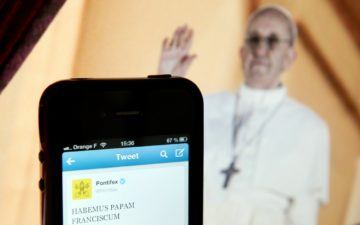Justin E. H. Smith in the New Statesman:
 When the New York Times Magazine ran its profile of the “Weird Catholic Twitter” (WCT) community in May 2020, extremely-online Catholics and non-Catholics alike came together in one of the internet’s periodic gestures of widespread, synchronised eye-rolling. One well-known Twitter personality, Connor Wroe Southard, wrote that this exposé was akin to the same newspaper’s description of the alt-right YouTuber Ben Shapiro as “the cool kid’s philosopher”. Another familiar voice of Twitter, Liz Franczak, exclaimed in a rawer spirit: “I cannot believe there is a Weird Catholic Twitter piece in nytmag.”
When the New York Times Magazine ran its profile of the “Weird Catholic Twitter” (WCT) community in May 2020, extremely-online Catholics and non-Catholics alike came together in one of the internet’s periodic gestures of widespread, synchronised eye-rolling. One well-known Twitter personality, Connor Wroe Southard, wrote that this exposé was akin to the same newspaper’s description of the alt-right YouTuber Ben Shapiro as “the cool kid’s philosopher”. Another familiar voice of Twitter, Liz Franczak, exclaimed in a rawer spirit: “I cannot believe there is a Weird Catholic Twitter piece in nytmag.”
The general consensus was that the NYT, as a vehicle of mainstream liberal ideology, was late to the scene, and was corrupting the nature of the thing it was seeking to report on for a larger audience, as has always happened when a subcultural trend gains mainstream attention. But the arrival of WCT in such a venue also brought to a wider public a familiar lesson: that in the era of social media no institution, not even the ones most defiantly removed from the shifting winds of fashion, can entirely avoid getting weird. Everything is getting weird, even the church built upon a rock.
My interest here is personal. I am Catholic, but in a weird and uncertain way.
More here.
